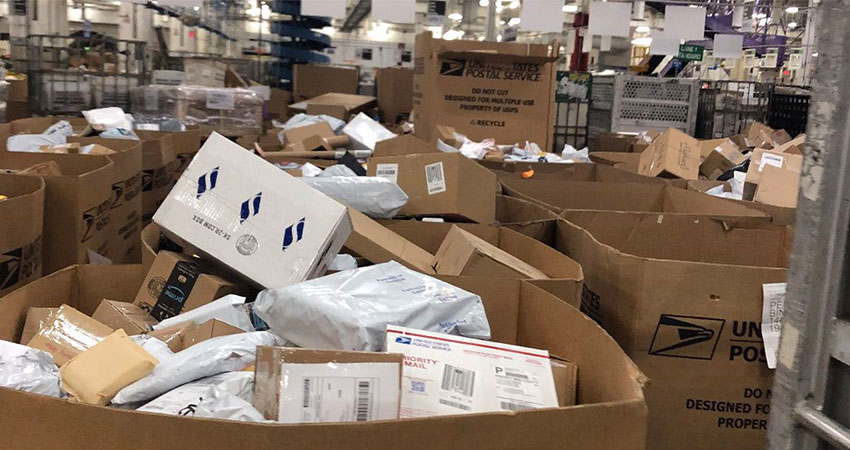The U.S. Postal Service had a very rare quarter in the black, and the Postmaster General promised to implement a bold 10-year plan to address shortfalls in service, infrastructure and the workforce, saying the disastrous delivery performance over the holidays was unacceptable.
“I acknowledge that during peak season, we fell far short of meeting our service targets,” Postmaster Louis DeJoy said during a regular quarterly meeting of the USPS’s board of governors. “Too many Americans were left waiting weeks for important deliveries of mail and packages. This is unacceptable and I apologize to those customers who felt the impact of our delays. All of us at the USPS will strive to do better.”
While the USPS saw GAAP net income of $318 million in the first quarter ended Dec. 31, vs. a loss of $748 million the prior year, CFO Joseph Corbett said this was driven by the massive volume of holiday delivery and not sustainable. Package volume was up 25% in the quarter, and by 40% during the November/December peak. Results were also aided by a first-time, temporary imposition of a peak surcharge.
“Package revenue growth in the medium to long term is not expected to make up for the loss of mail service revenue caused by COVID-19,” Corbett said. “During the great recession (2007-2008), we lost 20% of our mail volume, establishing a new norm. While the situation now is different in many ways, it still has relevance to our thinking. It’s unlikely that letter volume will recover to pre-pandemic levels.”
In terms of the 10-year plan, DeJoy said it will focus on a commitment to six-day service across the country, stabilization of the workforce and investment in infrastructure – including vehicles – technology and package sortation equipment.
Given the ongoing shift away from mail and toward increasing package volume in a competitive environment, DeJoy said, failure to act decisively now would jeopardize the USPS’s ability to meet its universal delivery obligation, and challenge its relevancy.
“For too many years, postal employees have been asked to do more with less, forced to employ antiquated systems, utilize outmoded equipment, and drive outdated vehicles,” DeJoy said. “This drives up costs and slows down service for customers. We cannot afford to keep this up.”
DeJoy said mail carriers got every piece of mail and every package to its destination within a day 99% of the time, even in the pressure cooker of a massive peak season in the middle of a pandemic, which he called “an astounding accomplishment.” The problem, he said, was a network that couldn’t bear up under the strain and get volume to the DDUs in a timely manner. Plants, transportation, processing equipment and operating strategy “have not evolved with the changing demands of our society.”
“Our new operating goals will be simple – get mail and packages to our carrier network in the most cost-effective manner, and on a deliberate schedule to meet our standards,” DeJoy said. “From there, our carriers will deliver them within a day – over 99% of the time – to addresses all across the country.”
DeJoy, whose position may be in jeopardy from a new board of governors, is also facing heat from Congress over his handling of COVID-19’s impact on the USPS workforce. U.S. Representatives Carolyn Maloney (D-NY) and Gerald Connolly (D-VA) are asking DeJoy to provide greater transparency and more effectively reduce the risks faced by USPS employees.
Maloney and Connolly said they were “deeply troubled” by a letter DeJoy send to governors indicating that 119 postal workers had died of COVID-19, and 14,000 had contracted the disease.

